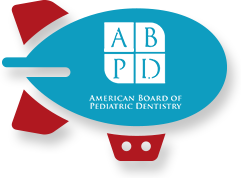Resolutions for a Cavity-Free Year
December 26th, 2013
Did you know that the most common chronic childhood disease is tooth decay? According to the Centers for Disease Control and Prevention, nearly one out of every five children in the US has an untreated cavity. More than 51 million school hours are lost every year because of dental problems. Moreover, nearly 100% of cavities are preventable. Want a cavity free year? Following these five simple steps can keep you and your kids on the right path to a healthy mouth:
1. Catch up on dental visits.
Start the year off right by setting up an appointment and taking care of issues you may have been avoiding. Time or finances can result in missed checkups, but putting off needed exams or dental work often causes problems to become more costly, more time consuming and more painful.
2. Commit to brushing 2min2x.
Brushing for two minutes, twice each day is basic to staying cavity free. Brushing at the same time each day, as part of your regular routine can help develop a daily habit of oral care. Consider brushing with your children so they can see an example of good oral hygiene and will be motivated to care for their own teeth. Because brushing for a full two minutes can be a challenge for young children, the ADA has created fun videos that are exactly two minutes long. You can find them on the 2Min2X website.
3. Consider using mouthwash.
Studies continually show that mouthwash can dramatically reduce cavities when used alongside regular brushing. Choose a mouthwash with the American Dental Association (ADA) seal of acceptance and make using it part of your daily routine.
4. Check that you are getting the proper amount of fluoride.
Fluoride is a natural mineral that has been shown to dramatically reduce cavities. You may not realize it, but most of the water coming from faucets in the U.S. is fluoridated. Unfortunately, bottled water usually doesn’t contain fluoride, so kids and adults that exclusively drink bottled water may be missing valuable anti-cavity benefits. Switch to tap water this year. You could save a plastic bottle from the trash and possibly your teeth from a cavity.
5. Clean between teeth by flossing.
Surprisingly, a survey from Delta Dental revealed that 43 percent of parents said their children’s teeth are never flossed. Additionally, the ADA reports that one in ten US adults neglect flossing as well. Why not start a new habit this year and begin flossing regularly? Flossing helps to reach the places that a toothbrush simply cannot go and it’s one of the best ways to prevent gum disease.
Cavities are preventable. This could be a banner year for your teeth simply by following these simple steps. Please leave a comment below if you have any questions or give us a call to set up an appointment today!





